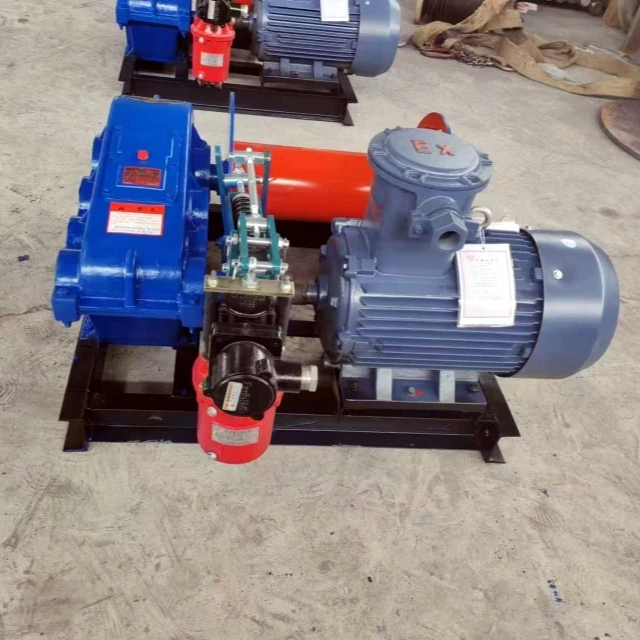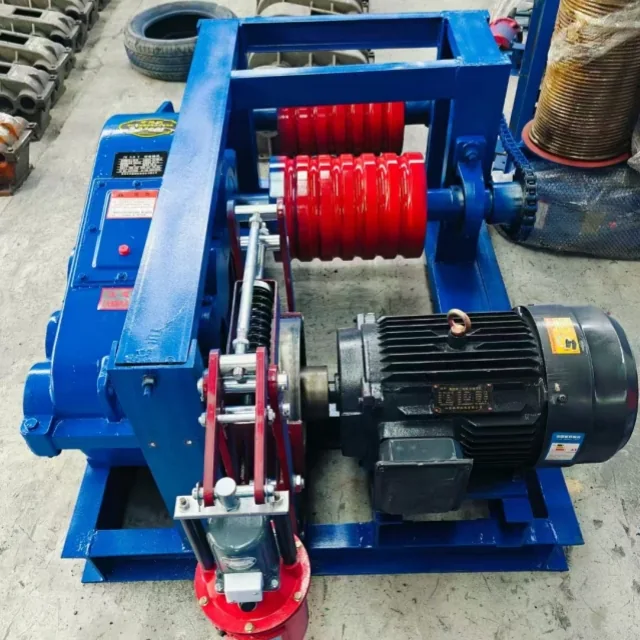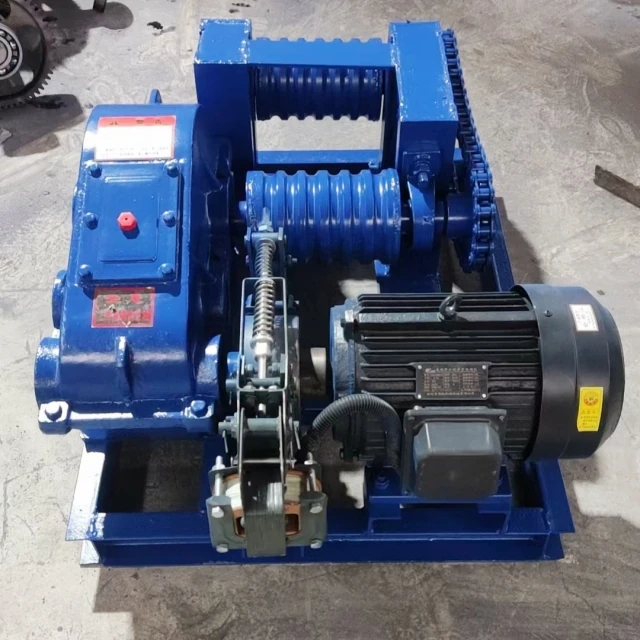Industrial winches are the unsung heroes of heavy industries, providing the muscle and precision needed to move massive loads safely and efficiently. Whether you're managing a construction site, overseeing mining operations, or coordinating port logistics, understanding the applications and technical advantages of winches can transform your operational efficiency. This article explores real-world use cases and the engineering innovations that make modern winches indispensable.
Winch Applications in Heavy Industries
Construction Site Material Handling Dynamics
Ever wondered how skyscrapers rise from the ground with such precision? Industrial winches play a pivotal role. They handle everything from lifting steel beams to positioning prefabricated modules. Unlike cranes, winches excel in confined spaces and vertical lifts, making them ideal for urban construction.
Key applications include:
- Vertical material transport: Hoisting tools, concrete buckets, and scaffolding.
- Tensioning systems: Stabilizing temporary structures like bridges or cantilevers.
- Emergency rescues: Lowering workers or equipment during malfunctions.
Mining Operations Under Extreme Conditions
Mining environments demand equipment that can endure dust, moisture, and erratic loads. Winches here aren’t just tools—they’re lifelines.
For example:
- Shaft sinking: Lowering personnel and machinery into deep pits with controlled speed.
- Ore hauling: Pulling heavy carts along inclined tunnels where traditional vehicles fail.
- Safety protocols: Equipped with automatic brakes to prevent runaway loads in steep declines.
Port Logistics and Coastal Engineering Needs
Ports rely on winches for tasks where brute force meets finesse. Imagine docking a cargo ship in high winds—winches with dynamic braking systems adjust tension in real time to prevent collisions.
Critical uses:
- Mooring operations: Securing vessels to docks with adjustable tension.
- Dredging equipment: Positioning suction pipes for harbor maintenance.
- Salvage operations: Recovering sunken assets with precise pull-force modulation.
Technical Advantages Driving Adoption
Load Capacity vs. Operational Flexibility
Winches strike a rare balance: they handle multi-ton loads while offering granular control. For instance, a single winch can switch between lifting a 50-ton generator and delicately positioning a glass panel. This versatility stems from:
- Variable speed motors: Adjust power output for delicate or heavy tasks.
- Modular designs: Add pulleys or cables to adapt to different scenarios.
Hydraulic vs. Electric Systems Comparison
The choice between hydraulic and electric winches hinges on your priorities:
| Feature | Hydraulic Winches | Electric Winches |
|---|---|---|
| Power Source | Dependent on hydraulic fluid | Direct electric current |
| Maintenance | Higher (leak risks) | Lower (sealed components) |
| Precision | Moderate | High (digital control) |
| Best For | Rugged, remote environments | Indoor or energy-efficient ops |
Electric models, like those from Garlway, excel in safety-sensitive sites due to their predictable motion and integrated alarms.
Safety Protocols Enabled by Winch Features
Safety isn’t an add-on—it’s engineered into modern winches. Automatic brake systems, for example, activate if a load exceeds capacity or a cable frays. Other innovations include:
- Load limiters: Halt operations before stress thresholds are breached.
- Emergency stops: Instant cutoff switches for unforeseen hazards.
- Remote operation: Keep workers away from high-risk zones.
A study noted that winches with these features reduced construction site accidents by up to 40% by eliminating uncontrolled movements.
Conclusion: Matching Winches to Your Industry’s Demands
Industrial winches are more than pulling devices—they’re force multipliers that enhance safety, efficiency, and adaptability. Whether you’re in construction, mining, or marine logistics, selecting the right winch involves:
- Assessing environmental challenges (e.g., dust, moisture, space constraints).
- Prioritizing safety features like automatic brakes and load monitoring.
- Choosing between hydraulic and electric systems based on power needs and maintenance capacity.
For industries where precision and reliability are non-negotiable, Garlway’s winch solutions offer the robust performance needed to tackle tomorrow’s heavy lifting challenges.
Need help specifying the ideal winch for your operations? Consult with equipment experts to align features with your sector’s unique demands.
Related Products
- Electric and Hydraulic Winch for Heavy Duty Applications
- Best 18000 Pound Drum Anchor Trailer Winch
- Commercial Construction Mixer Machine for Soil Cement Mixing Concrete
- Small Electric Winch 120V and 240V for Compact Applications
- 12000 lb Heavy Duty Electric Boat Winch
Related Articles
- How to Choose the Right Winch for Heavy-Duty Applications: A Scenario-Based Guide
- How to Choose and Safely Operate Winches for Construction Efficiency
- How to Choose and Optimize a Winch for Any Job: Power, Capacity, and Environment
- How Winch Technology Solves 5 Critical Heavy-Load Challenges
- How Winch Certification Shields Your Business from Legal and Operational Risks
















